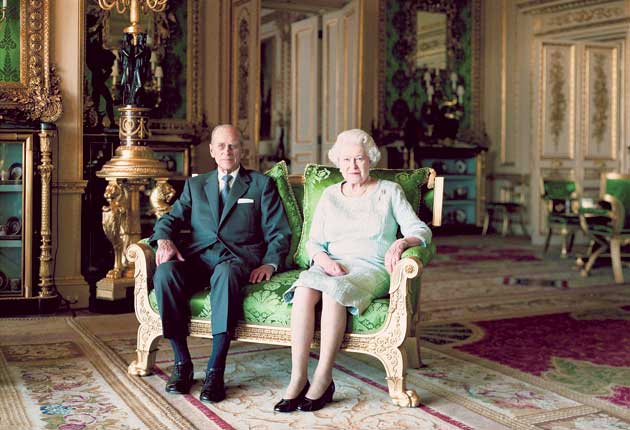The hidden messages buried in the Queen and Duke's first joint portrait
Philip Hensher deconstructs Thomas Struth's unprecedented image of the royal couple

Your support helps us to tell the story
From reproductive rights to climate change to Big Tech, The Independent is on the ground when the story is developing. Whether it's investigating the financials of Elon Musk's pro-Trump PAC or producing our latest documentary, 'The A Word', which shines a light on the American women fighting for reproductive rights, we know how important it is to parse out the facts from the messaging.
At such a critical moment in US history, we need reporters on the ground. Your donation allows us to keep sending journalists to speak to both sides of the story.
The Independent is trusted by Americans across the entire political spectrum. And unlike many other quality news outlets, we choose not to lock Americans out of our reporting and analysis with paywalls. We believe quality journalism should be available to everyone, paid for by those who can afford it.
Your support makes all the difference.The first thing to know about Thomas Struth, the creator of a stunning new portrait of the Queen and the Duke of Edinburgh, is that he is not a portraitist. He comes from a continental school of photography which values, above all, architecture, and often presents it on a colossal scale.
Struth's masters were Bernd and Hilla Becher, West German photographers of empty industrial scenery. It might seem a long way from the Bechers' austere, massive photographs of concrete cooling towers to the Green Drawing Room at Windsor Castle.
But, like many of his best contemporaries, such as Candida Hofer, Andreas Gursky and the Frenchman Luc Delahaye, Struth is fascinated by the drift of humanity across the immensity of art, buildings and the world. His most famous photographs are of visitors to museums and historic churches; his subject the passing expressions of boredom, engagement, and sometimes, intelligence against the remote and grand statements of art.
This magnificent image, as Struth has said, seeks to place the Queen and the Duke of Edinburgh "both in their royal environment... and yet both in their own aura". The immense, ancient genre of royal portraiture has recently sought to explore ways in which royalty tries on its own roles – Lucian Freud's weighty miniature of the Queen wearing the State Crown, or, less admirably, Annie Leibowitz's recent vulgar photograph of the Queen in heavy robes and artificial, Hollywood lighting. Struth avoids all of that. The only hint of personal regalia is a brooch on a domestic scale, and the Duke's famous and by now unique habit of wearing his breast-pocket handkerchief in a horizontal line. ("He's forgotten to post his Pools envelope," a friend of mine routinely remarks). All around them, of course, is the baroque splendour of the Green Drawing Room, but what defines them is a pair of comfortably human expressions, and a subtly suggestive effect of light.
Although the pair are seated next to each other, the light falls more fully on the Queen, and the Duke appears to be retreating somewhat into a half-shade. It alludes delicately to the relative roles of Queen and Duke. It also, however, asserts the paradoxical powers of art. In art, we always look first at the figure in shade, the one retreating from us. In a portrait to celebrate the Duke's 90th birthday, his secondary standing in life is confirmed, but the shadow draws the eye to him before his wife and monarch.
The effect, overall, is very similar to one of the great masterpieces of Anglo-Saxon portraiture, Sargent's The Daughters of Edward Darley Boit. There, too, figures are presented amidst the massive grandeur of art, in an interior light which retreats into deep, glittering shade.
There is a monumentality of scale in both Struth and Sargent which remains somehow separate from the humanity of the subjects. And, in both, there is a curious, unexpected touch of innocence. The more you look at the Queen and the Duke in Struth, the more it seems that he is right: it is in this extraordinary setting that, without theatrics, they feel themselves most at home.
Join our commenting forum
Join thought-provoking conversations, follow other Independent readers and see their replies
Comments